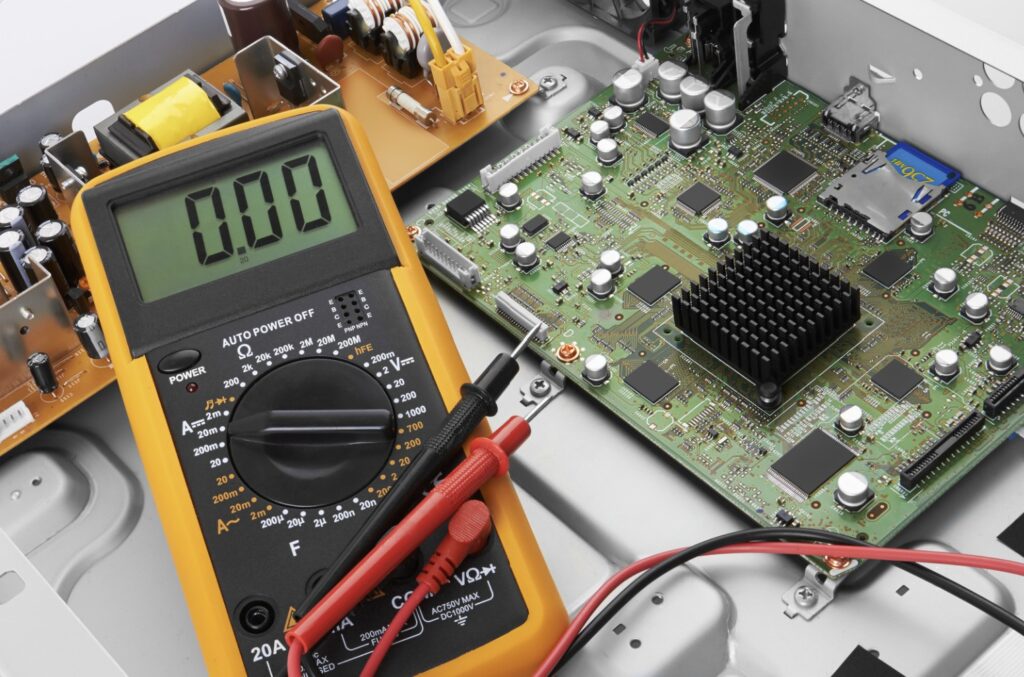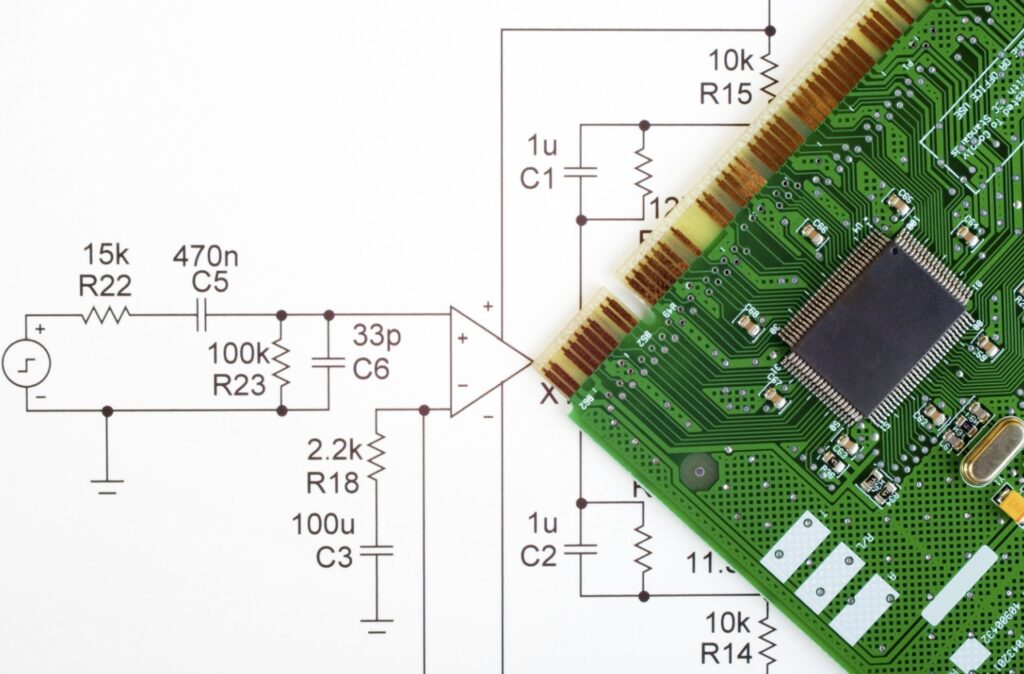With innovation and constantly changing technology in the fast pace of the world today, electronic engineering is such an essential area that fosters creativity for dealing with many of the complex challenges presented across numerous industries. From consumer devices to industrial automation, electronic design and engineering have been and will remain in critical importance. The paper presents the critical factors characterizing the solutions of electronic engineering, focusing on how electronic design and custom electronic design become central for dealing with modern challenges facing technological advancements.
The Evolution of Electronic Engineering
Electronic engineering has come a long way since its inception, evolving in tandem with technological advancements. Initially rooted in basic circuit theory, the field has expanded to encompass a multitude of disciplines, including telecommunications, embedded systems, robotics, and more. Today, electronic engineers are at the forefront of developing innovative solutions that redefine industries, improve efficiency, and enhance user experiences.
Key Areas of Electronic Engineering
- Consumer Electronics: The demand for smarter, more efficient consumer products has necessitated continuous innovations in electronic design. Devices such as smartphones, smartwatches, and home automation systems rely on sophisticated electronic engineering to function flawlessly.
- Industrial Automation: In a manufacturing landscape driven by the need for efficiency and precision, electronic engineering plays a vital role. Custom electronic design enables the creation of specialized control systems, sensors, and actuators that streamline operations and enhance productivity.
- Healthcare Technology: The healthcare sector is experiencing a technological revolution, with electronic engineering contributing significantly to the development of medical devices, telemedicine solutions, and health monitoring systems. These innovations improve patient care while ensuring data accuracy and security.
- Telecommunications: With the proliferation of mobile devices and the growing need for data connectivity, telecommunications have emerged as a crucial area of electronic engineering. Network infrastructure, communication protocols, and RF (radio frequency) design are essential components in supporting global connectivity.
- Automotive Electronics: The automotive industry is undergoing a transformation with the rise of electric vehicles (EVs) and autonomous driving technologies. Electronic engineering solutions are integral to developing advanced driver-assistance systems (ADAS), EV batteries, and smart vehicle communication systems.
The Importance of Electronic Design
Streamlining Development Processes
Electronic design is the backbone of product development in the electronics industry. It involves creating the schematics, PCB (printed circuit board) layout, and overall architecture of electronic systems. A well-structured design process facilitates quicker prototyping, reduces the risk of errors, and minimizes production costs.
Incorporating Industry Standards
Incorporating industry standards into electronic design ensures that products are not only functional but also safe and reliable. Compliance with guidelines such as IPC, ISO, and others mitigates risks and fosters trust among consumers and stakeholders.
Enhancing User Experience
User experience is paramount in today’s tech-driven world. Effective electronic design focuses on usability, aesthetics, and performance, ultimately catering to the evolving needs and preferences of users. Through a user-centered design approach, engineers create products that are intuitive and high-performing.

Custom Electronic Design: Tailoring Solutions to Specific Needs
While off-the-shelf solutions might suffice in some cases, custom electronic design is increasingly becoming a necessity for businesses looking to differentiate themselves. Customization allows for tailored solutions that address specific technical requirements and business challenges.
Advantages of Custom Electronic Design
- Unique Functionality: Tailored designs allow for unique functionalities that may not be available in mass-produced products. This distinguishes businesses in competitive markets.
- Optimized Performance: Custom designs can be optimized for specific applications, ensuring maximum efficiency and performance, which can lead to cost savings in the long run.
- Integration with Existing Systems: Custom electronic solutions can be designed to seamlessly integrate with existing frameworks and technologies, reducing operational friction and promoting sustainability.
- Scalability and Future-Proofing: Custom solutions can be built with scalability in mind, allowing businesses to adapt to changing technological landscapes and market demands with ease.
Addressing Today’s Tech Challenges
As we navigate the complexities of the digital age, several challenges necessitate innovative electronic engineering solutions. Some pivotal areas where electronic engineering plays a crucial role are:
Cybersecurity
With the rise of interconnected devices, cybersecurity has become a pressing concern. Electronic engineering solutions focus on developing secure communication protocols and hardware encryption methods that safeguard data integrity and user privacy.
Sustainability
The electronics industry is witnessing growing demand for environmentally responsible practices. Electronic engineering is at the forefront of designing energy-efficient devices and developing materials that reduce electronic waste. This sustainability push aligns with global initiatives to combat climate change.
IoT and Wireless Technologies
The Internet of Things (IoT) has transformed how devices interact and communicate. Electronic engineers are tasked with designing low-power, efficient, and connectivity-enabled devices that can seamlessly integrate into IoT ecosystems. Custom electronic design solutions facilitate innovation in this space, ensuring devices perform optimally under diverse conditions.
Rapid Prototyping and Agile Development
In today’s fast-paced environment, the ability to rapidly prototype and iterate designs is crucial. Electronic engineering employs advanced simulation tools and CAD software to streamline development processes. This agility allows businesses to bring products to market more swiftly, responding to consumer demands effectively.
Integration of Artificial Intelligence
The integration of artificial intelligence (AI) into electronic systems is unlocking new levels of functionality and efficiency. Engineers are leveraging AI to create smarter devices capable of learning user behaviors, enabling automated decision-making processes, and enhancing overall system performance.
The Future of Electronic Engineering Solutions

As technology continues to advance, the future of electronic engineering solutions looks promising. Several trends are shaping the future landscape, including:
Increased Demand for Automation
Automation is becoming ubiquitous across industries, with electronic engineering serving as a core enabler. From self-driving vehicles to automated manufacturing systems, the role of electronics in ensuring safety and efficiency will continue to expand.
Advancements in Materials Science
The discovery of new materials, such as graphene and advanced polymers, is revolutionizing electronic design. These materials promise to enhance device efficiency, reduce size and weight, and improve thermal management.
Quantum Computing
The emergence of quantum computing presents both challenges and opportunities for electronic engineers. Developing components that can withstand quantum effects while maintaining reliability will be critical in paving the way for this next generation of computing technology.
Continuous Learning and Adaptation
Continuous education and adaptation will be essential for electronic engineers to keep pace with technological advancements. As the field becomes more specialized, engineers must commit to lifelong learning, embracing new skills and methodologies to remain competitive.
Conclusion
In conclusion, electronic engineering solutions are indispensable in addressing today’s tech challenges across various sectors. From consumer products to industrial applications, the significance of electronic design and custom electronic design shines through as essential pillars of innovation. Embracing advancements in technology and sustainability will enable electronic engineers to continue delivering effective solutions tailored to meet the growing demands of our increasingly interconnected world.
Despite the challenges faced, the endless possibilities within electronic engineering serve as a reminder of its transformative potential, ushering in a future driven by creativity, innovation, and unwavering commitment to enhancing the human experience.
